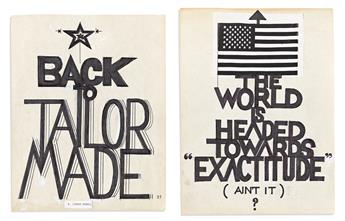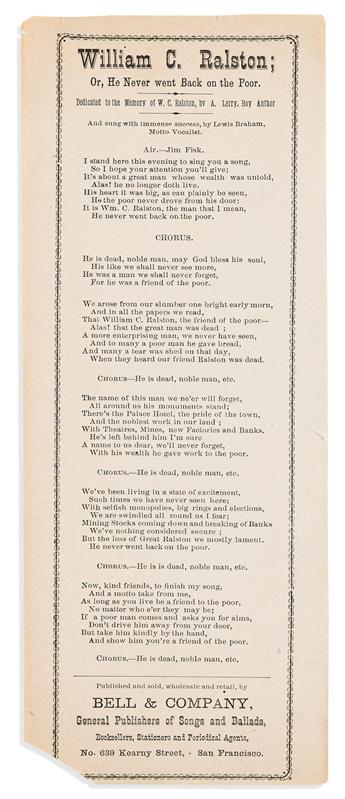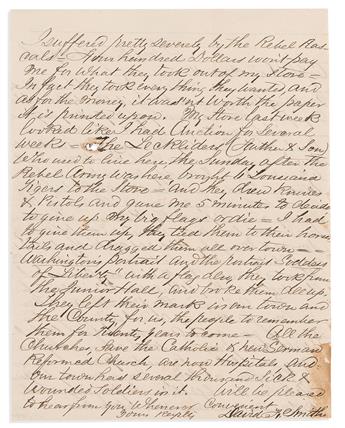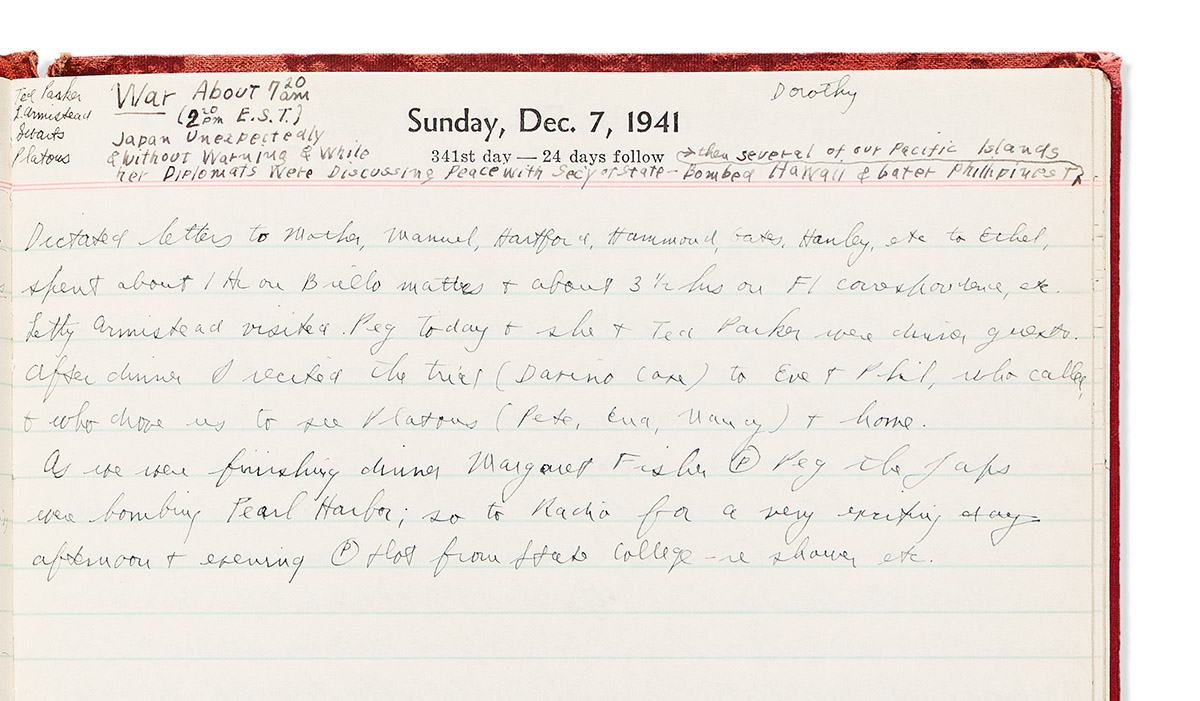Sale 2708 - Lot 174
Estimate: $ 500 - $ 750
Additional Details
Also in This Catalogue
-

 Lot 30(ART.) Designs and papers of Los Angeles artist Judson Powell.Estimate $500 - $ 750
Lot 30(ART.) Designs and papers of Los Angeles artist Judson Powell.Estimate $500 - $ 750 -

 Lot 41(CALIFORNIA.) William C. Ralston: or, He Never Went Back on the Poor.Estimate $500 - $ 750
Lot 41(CALIFORNIA.) William C. Ralston: or, He Never Went Back on the Poor.Estimate $500 - $ 750 -

 Lot 64(CIVIL WAR--MARYLAND.) David F. Smith. Letter describing the Louisiana Tigers ransacking a Maryland store and desecrating flags.Estimate $500 - $ 750
Lot 64(CIVIL WAR--MARYLAND.) David F. Smith. Letter describing the Louisiana Tigers ransacking a Maryland store and desecrating flags.Estimate $500 - $ 750


